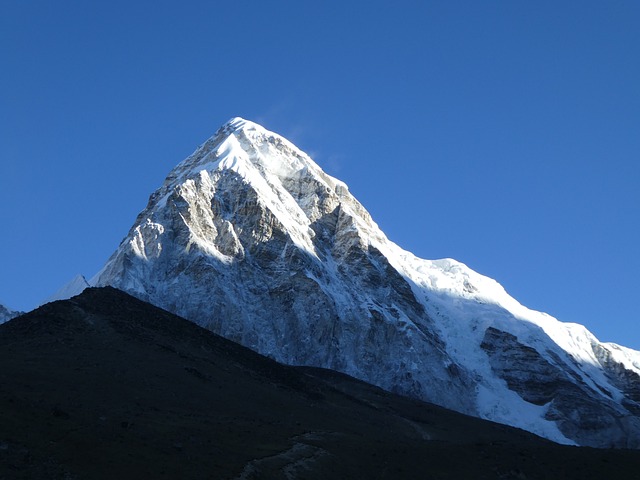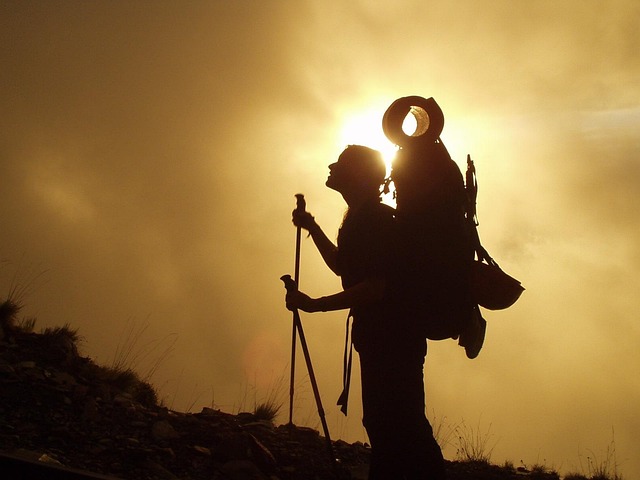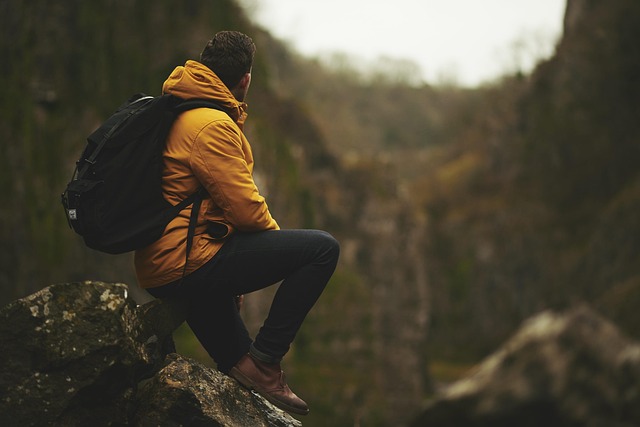The Australian Base Camp Trek in Nepal: A quick trek around the area of Pokhara, the Australian Base Camp Trek takes us to stunning vantage points to witness some of the most stunning views of the Annapurna range in Nepal. Great for beginners, it winds through scenic villages, thick woods, and terraced fields, with excellent views of peaks such as Machapuchare and Annapurna. This trail will suit anybody looking for culture and natural beauty—a peaceful Himalayan experience without the aches and pains that come with the longer trails.

Widely popular for its enormous mountain peaks and mesmerising culture(s), Nepal is home to the best trekking trails you would not regret trekking. The Australian Base Camp Trek is one of them, and a bejewelled trek of Annapurna Region. Wether you are already an experienced trekker or even a beginner looking for a moderate challenge then this trek is suitable to those who want to explore the beautiful mountain scenery, diverse culture and natural beauty of Nepal without a high-altitude hiking.
This itinerary will provide you with the information you need to plan your trip including distance, cost, must-see places and local experiences.
What is the Australian Base Camp Trek in Nepal?
The trek to the Australian Base Camp is a relatively short and pleasant trek in the foothills of the Annapurna Range. Travelling at 2,300m, the trek provides stunning views of the Annapurna, Dhaulagiri and Machapuchare (Fishtail) peaks. From Phedi—a village near Pokhara—the trek takes roughly 3-4 days, covering a distance of about 30-35 kilometers (round trip).
The Australian Base Camp is so named to reflect the Australian government’s donation to create the first trail to open up this amazing area. It’s an awesome place to get a taste of the mountains and see panoramic views without committing to longer, more challenging treks such as Everest Base Camp or the Annapurna Circuit.
Distance and Time Taken for Trekking

Total Hike Distance: ~30-35km (round trip from Phedi).
Trek Length: 3-4 days, depending on how fast you walk and how much time you take to look around.
Average distance covered: Crossing distance on foot per day:
Day 1: Drive to Pokhara and Phedi (drive) → Phedi to Kokhethanti aprox 4-5 km
Day 2: Kokhethanti – Australian Base Camp (approx 10 km)
Day 3: Australian Base Camp to Kokhethanti (around 10 km)
Day 4–Kokhethanti–Phedi (approx 4–5 km) → Pokhara (drive)
It is an intermediate hike and does not accommodate for beginners with a low fitness level. The route has sections that climb, but it’s not as difficult as many treks in Nepal’s mountainous regions.
Cost Breakdown of an Australian Base Camp Trek
Transportation Costs
Bus from Kathmandu to Pokhara: A tourist bus will cost between NPR 800 and NPR 1,000 (USD 7 to USD 9) one way. Local buses are much cheaper at about NPR 500 to NPR 600 (USD 4-5).
Private transport: A bit more comfortable and private is a private car – which costs around NPR 8,000 to NPR 12,000 (USD 70 to 100) one way. This price is perfect if you’re traveling with friends because the price goes down easily.
Food: Prices for food at those guesthouses range from 300-500 NPR per meal. Traditional meals like dal bhat (lentil soup with rice), hearty momo (dumplings) and noodles are inexpensive and will fill you up.
Guide and Porter Fees
You can do the Australian Base Camp trek without a guide but a local one will make your experience so much more enriching offering cultural insights, handling logistics (weather, food shelter) and providing a platform for a safer trek. Guides are fluent in English, which can be an added bonus if you don’t speak the local language.
Guide: The cost to hire a guide for the Australian Base Camp trek is between NPR 3,000 and NPR 4,000 per day (US$ 25-35).
Porter: To hire a porter to take your bags will be around NPR 2500-3000 per day (USD 20-25).
Permits
For the Australian Base Camp trek, you will need to have the Annapurna Conservation Area Permit (ACAP) and a Trekkers’ Information Management System (TIMS) card. Fees for these permits are:
ACAP Permits: NPR 2,000 (USD 15-20 approx)
TIMS Card: NPR 1,000 (USD 8-10) onCreateViewHolder TIMS Card: NPR 1,000 (USD 8-10)
Trekker’s need these permits in the Annapurna region and can be purchased in Pokhara or Kathmandu.
Travel Insurance
Travel insurance is essential while trekking in the Himalayas. It can include medical emergencies, evacuation, flight delays and lost luggage. Mountains Trekkers travel insurance can cost between USD50 and USD150 for a week, depending on your level of coverage.
Miscellaneous Costs
You might want to bring a few snacks or some personal items with you on the hike. It’s possible to purchase energy bars, chocolate or local snacks at small shops on the trail. Prices might be a bit higher than in Pokhara, but they’re still cheap.
Snacks and drinks: NPR 100 (USD 1) to NPR 300 (USD 3) per item.
Water: Bottled water is available on trail for approximately NPR 50 to NPR 150 (USD 1-2) per bottle. Otherwise, pack a water purifier or water filter so you can fill your bottle and save them money.
Australian Base Camp Trek Highlighs 1.
The Natural Beauty

Trekking down to the Australian Base Camp There is some fantastic mountain views on the Australian Base Camp Trek. There beautiful mountain panorama views of Annapurna range, Machapuchare Fishtail, Dhaulagiri and Lamjung Himal can be seen from base camp. Mornings and late afternoons provide the best light for photos, when the sun give a golden glow to the snow-covered summits.
Sunrise and Sunset views: Do not miss the opportunity to witness the sunrise or sunset from the Australian Base Camp. The gold colors of the mountains are amazing.
Unique Cultural Experience
It’s a rare chance to glimpse the culture of the Gurung people, an ethnic community who reside in this area. The Gurung are some of the most hospitable people in Nepal, and invariably you’ll be invited to share a tea or talk with them about their lives and different traditions.
Visit Local Villages: Trek is also a tour of the villages encountered along the way such as Kokhethanti – an authentic Gurung village where you can see the local way of life, agriculture, and crafts. This is an excellent opportunity to see the local colour up close.
Wildlife and Flora
You’ll pass through varied flora and fauna as you trek. The trek saw jungle valleys cloak in fragrant cloud-to-jungle rainforest of lillipur and learn more mixed and dense forests of rhododendron and magnolia, then changing in squat pine forests, and back in scrub and rough meadows of alpine. You may even see wildlife including langur monkeys, Himalayan tahr and birds.
Rhododendron Forests: Rhododendron trees blossom around the spring season, adding beautiful reds, pinks, and whites to the hillside landscape.
Peaceful Experience
Being a quieter trek than many popular treks in Nepal, the Australian Base Camp walk is fairly serene. The number of tourists is less than on the Annapurna Circuit or the Everest Base Camp trek and you can appreciate nature better in a peaceful way.
When is the best time to trek the Australian Base Camp?
The Australian Base Camp trek is best done during the spring (March – May) and autumn (September – November). It is in these months that you’ll experience blue skies, comfortable temperatures; and, imagine jaw-dropping mountain views.
Spring (March – May) Rhododendrones start blooming throughout at this time and the weather starts to become warm that gives a great experience to see the rhododendrones along the trail.
Autumn (September to November): With the monsoon over, the air is clear and the mountains are at their handsome best. The temperatures are also cool and the walk is quite some comfortable.
Do Not Trek During Monsoon (June – August): Monsoon commences with heavy rains rendering the trail slippery and treacherous. The landscape can also be clouded over.
Winter (December to February):Winter at lower Annapurna region is not intense but at higher elevation it can get quite cold. That it may be harder to hike, get through snow.
Conclusion: That’s Why The Australian Base Camp Trek is About Your Time
The Australian Base Camp trek is perfect for individuals looking for a taste of the Annapurna Range without the level of difficulty associated with higher altitude treks. The trek is doable, access is simple from Pokhara, and the Himalayas views, cultural encounters, and rural experience are all-enveloping.
The ABC trek is definitely an experience you will cherish for years to come with a relatively brief travel span, low on the budget and an opportunity to marvel at the natural scenery and the Gurung culture of Nepal.
Well, polish the boots, pack your bags and get ready for an adventure of a lifetime into the heart of the Himalayas!
Accommodation Costs
On the Australia Base Camp trek accommodation is inexpensive but not cheap quality basic facilities such as hot-water, Wi-Fi (some places) and comfortable sleeping rooms offered in most guesthouses and teahouses. Here are the average costs:
Accommodation (Guesthouses/Teahouses): NPR 300 – NPR 1,000 (USD 3-10) per night (varies according to location and room type).
FAQ
Here are five frequently asked questions (FAQs) about the Australian Base Camp Trek in Nepal:
1. What is the Australian Base Camp Trek?
The Australian Base Camp Trek is a popular short trek in the Annapurna region of Nepal. It takes trekkers to the Australian Base Camp, which is situated at an altitude of about 2,200 meters (7,218 feet) and offers stunning panoramic views of the Annapurna and Machapuchare mountains. The trek is relatively easy and ideal for those with limited time but who still want to experience the beauty of the Himalayas.
2. How difficult is the Australian Base Camp Trek?
The Australian Base Camp Trek is considered to be a moderate trek. It does not require technical climbing skills, but some physical fitness is required to handle the steady uphill walks. The trek involves a gradual ascent, and while it’s not as challenging as higher-altitude treks, altitude sickness can still be a concern, so it’s important to go at your own pace and acclimatize properly.
3. How long does the trek take?
The Australian Base Camp Trek typically takes around 4-5 days to complete. This allows for a comfortable pace with time for acclimatization. The trek starts from Pokhara, and you will pass through picturesque villages, dense forests, and terraced fields before reaching the Australian Base Camp.
4. What is the best time to do the Australian Base Camp Trek?
The best times to trek to Australian Base Camp are during the spring (March-May) and autumn (September-November) seasons. These months offer the clearest skies, moderate temperatures, and the best views of the surrounding mountains. Winter can be cold, and summer brings the monsoon rains, which can make the trails slippery.
5. What are the accommodations like on the Australian Base Camp Trek?
Along the trek, accommodation is provided in tea houses or lodges. These are basic but comfortable, offering simple rooms with beds, blankets, and shared bathrooms. The tea houses often serve traditional Nepali food such as dal bhat (lentil soup with rice), as well as some Western-style meals. You’ll find that the hospitality and warmth of the locals make for a memorable experience.